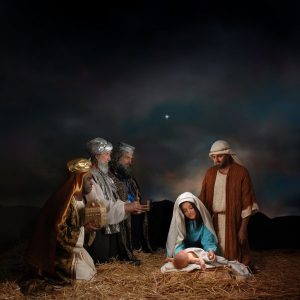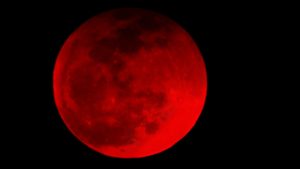Towards the end of each year, the world starts getting ready for the Christian festival of Christmas that marks the birth of Jesus Christ.
The Bible gave useful clues and these can help scientists unravel the events that led to that day.
In the gospel of Luke 2:1-7, a decree went out from Caesar Augustus for a census of the whole world.
At that time, Quirinius was governor of Syria and Joseph took his betrothed, Mary, to Bethlehem, the city of David, to be counted as he was of the lineage of David.
While they were there, the time came for Jesus to be born and Mary wrapped him up in swaddling cloth in a manger because there was no place for them in the inn.
Historians believe that census ordered by Augustus Caesar was for the purpose of taxing the Roman world and took place in 5 B.C.
Augustus Caesar, who decreed the census, was born 23 September, 63 B.C. and died at the age of 76 years. He ruled from 27 B.C. to 15 A.D.
The gospel of Matthew made it clear that Jesus was born when Herod was king of Judea (Matthew 2:1).
Herod was titled King of Judea in 40 B.C by Marc Anthony. He, however, did not sit on the throne until 37 B.C.
The first century Jewish historian, Flavius Josephus, wrote that Herod died soon after a lunar eclipse before Passover. There was a partial lunar eclipse on March 13, 4 B.C., and total lunar eclipse on January 9 – 10, in 1 A.D., both before the Passover in the year they happened.
Other historical accounts say Herod died at about 70 years of age and lived from 74 B.C. to 4 B.C. The death of King Herod in 4 B.C. matches the account of Josephus that he died soon after an eclipse before the Passover, which was most probably, the one in 4 B.C.
There is however, controversy over the period Quirinius was governor of Syria. Tertullian, the Roman historian, in his account, wrote that Quirinius was appointed governor of Syria in 6 A.D. and died in 22 A.D.
The gospel of Luke contradicts this account and is supported by other pieces of historical evidence because Jesus could not have been born as late as 6 A.D. when Tertullian said Quirinius was governor of Syria.

According to the gospel of Matthew, a (unique) star appeared in the sky which wise men from the East followed to Jerusalem, and Herod summoned the wise men secretly to ascertain when the star appeared (Matthew 2:7).
The star moved and stopped over the place that Jesus was born (Matthew 2: 9), and the wise men rejoiced exceedingly when they saw the star (Matthew 2:10). Matthew’s gospel further has it that Joseph took Mary and the child Jesus to Egypt to escape King Herod and remained there until Herod died (Matthew 2:14 and 15).
Herod ordered the massacre of all male children from two years of age and under in Bethlehem and surrounding districts to eliminate Jesus, the new-born king (Matthew 2:16).
Matthew 2: 17 and 18, quoting Jeremiah 31: 15, “Then what was said through the prophet Jeremiah was fulfilled: A voice is heard in Ramah, weeping and great mourning. Rachel weeping for her children and refusing to be comforted, because they are no more.”
The actual date of the massacre is not known.
Christians started holding remembrance day from about 485 A.D. for those infants killed by Herod. The Catholic Church regards them as the first martyrs and holds the Feast of the Holy Innocents every December 28.
There was no astronomical record of stars at that time to be relied upon and scientists cannot regress back in time on this because stars are too many and too far away to be properly understood. There are several billions of stars and about 8,000 of them are visible to the unaided eye on Earth.
There are people who believe the Star of Bethlehem could not have been a star but a conjunction of the planets Jupiter and Saturn, such that they appear as if they are nearly touching, when viewed from Earth, and therefore bright. Calculations show that there was such a conjunction on May 27, 7 B.C. Such a conjunction occurs once in 20 years.
There was a second, a double conjunction, on October 6, 7 B.C. and a third, a triple conjunction on December 1, 7 B.C. It is possible to have more than one conjunction in a year because the two planets move in elliptical, not circular, orbits and at different velocities. Such a triple conjunction occurs once in about 139 years.
Though conjunctions have been seen as important astrological events, they cannot move and stop as the Star of Bethlehem was described in the Bible.
The Bible did not give the number of the wise men, but it is believed they were three because they presented three gifts to baby Jesus and worshiped (Matthew 2: 12).
They would have known if it was a Jupiter-Saturn conjunction and that it was not a star.
Saturn is the farthest planet in our Solar System visible to the naked eye.
Astrologers try to use a person’s date of birth and the Zodiac signs, or horoscope, to say how the heavenly bodies will affect his life and personality and what he will ultimately be.
The wise men, who from their conviction based on the star they saw, worshiped baby Jesus, were, therefore, astrologers.
They are not astronomers who are solely scientists.
Astrologers still persist today and you can read them in columns like “Your Star Today” and “Your Horoscope” in daily newspapers and internet.

Putting all the facts together, many scholars believe that Jesus was born between 7 B.C. and 4 B.C. This takes care of the census ordered by Augustus Caesar which took place in 5 B.C. for which Joseph took Mary to Bethlehem so that he can be enrolled, and the time came for Jesus to be born.
The year 7 B.C. takes care of the Jupiter-Saturn conjunction.
The year 4 B.C. accommodates Herod’s death.
Joseph fled to Egypt with baby Jesus and Mary and returned when King Herod died (Matthew 2: 14 and 15).
It is known that King Herod died in Jericho in 4 B. C. from a putrefying disease of unknown cause, later to be called Herod’s Evil. Josephus wrote that the disease was so painful that it forced King Herod to attempt suicide by stabbing.
On Herod’s death, Augustus Caesar divided his kingdom among three of his children: Archelaus, Herod Antipas, Philip the tetrarch, and his sister Salome 1.
Non-uniformity of early calendars makes dating difficult.
There were several ancient calendars, but in 45 B.C. Julius Caesar, on the advice of Greek astronomer, Sosigenes, was said to have instituted the Julian calendar and gave a year as 365 days and leap year every four years. This was also known as the Roman calendar.
The Russian Orthodox Church follows the Julian calendar and observes Christmas on 6 or 7 January.
Romans named the days after Sun, Moon gods and other planets. The week had come about because Christian traditions required rest every seventh day.
The Gregorian or Christian calendar started by Pope Gregory XIII came with the birth of Christ, A.D. (anno domini or Latin for “In the year of our Lord”) and going to B.C. (Before Christ).
The birth of Jesus Christ was given as 25 December, 1 B.C.
Isaac Newton was born in Woolsthorpe, England, on December 25, 1642, in the Julian calendar, or January 4, 1643, in the Gregorian calendar.











